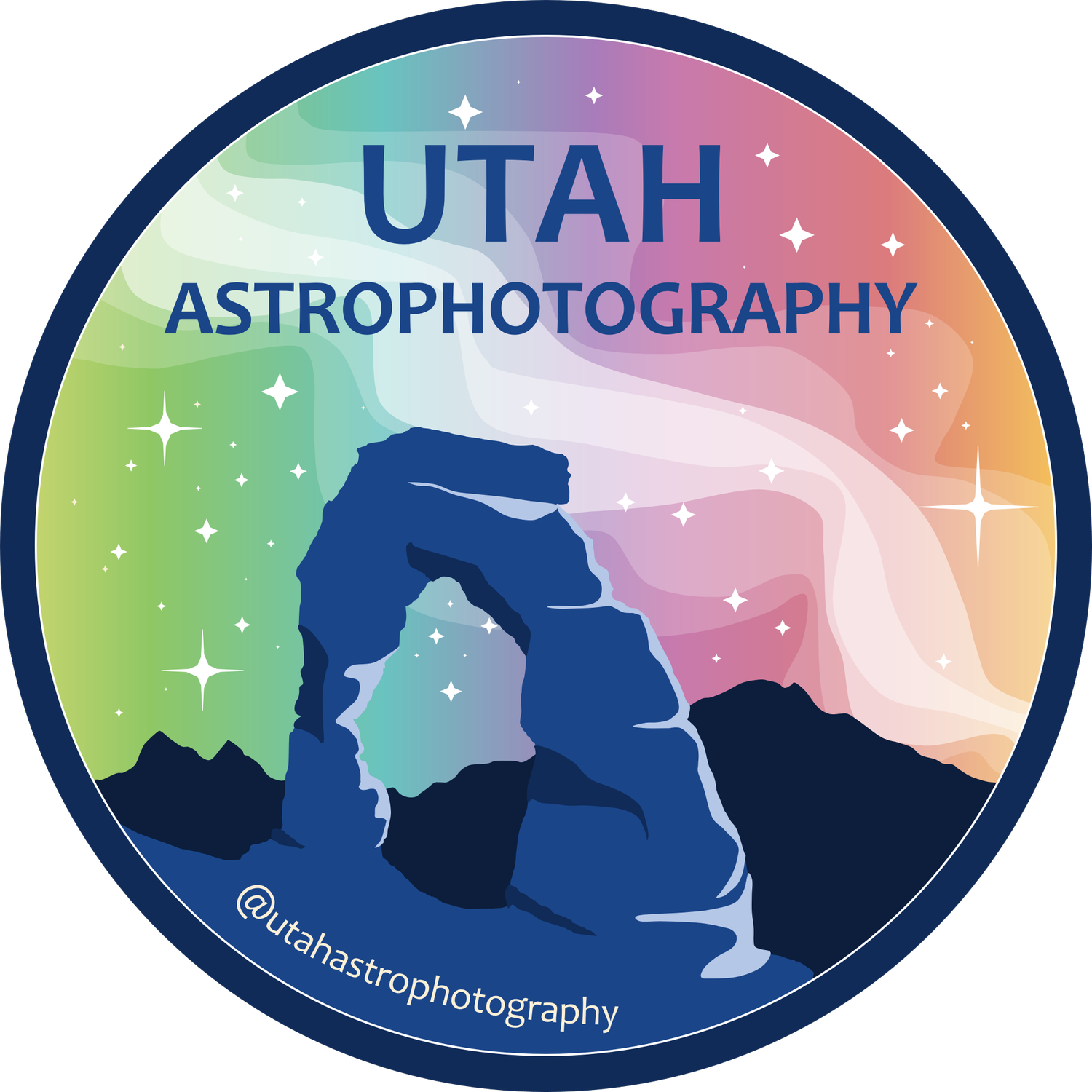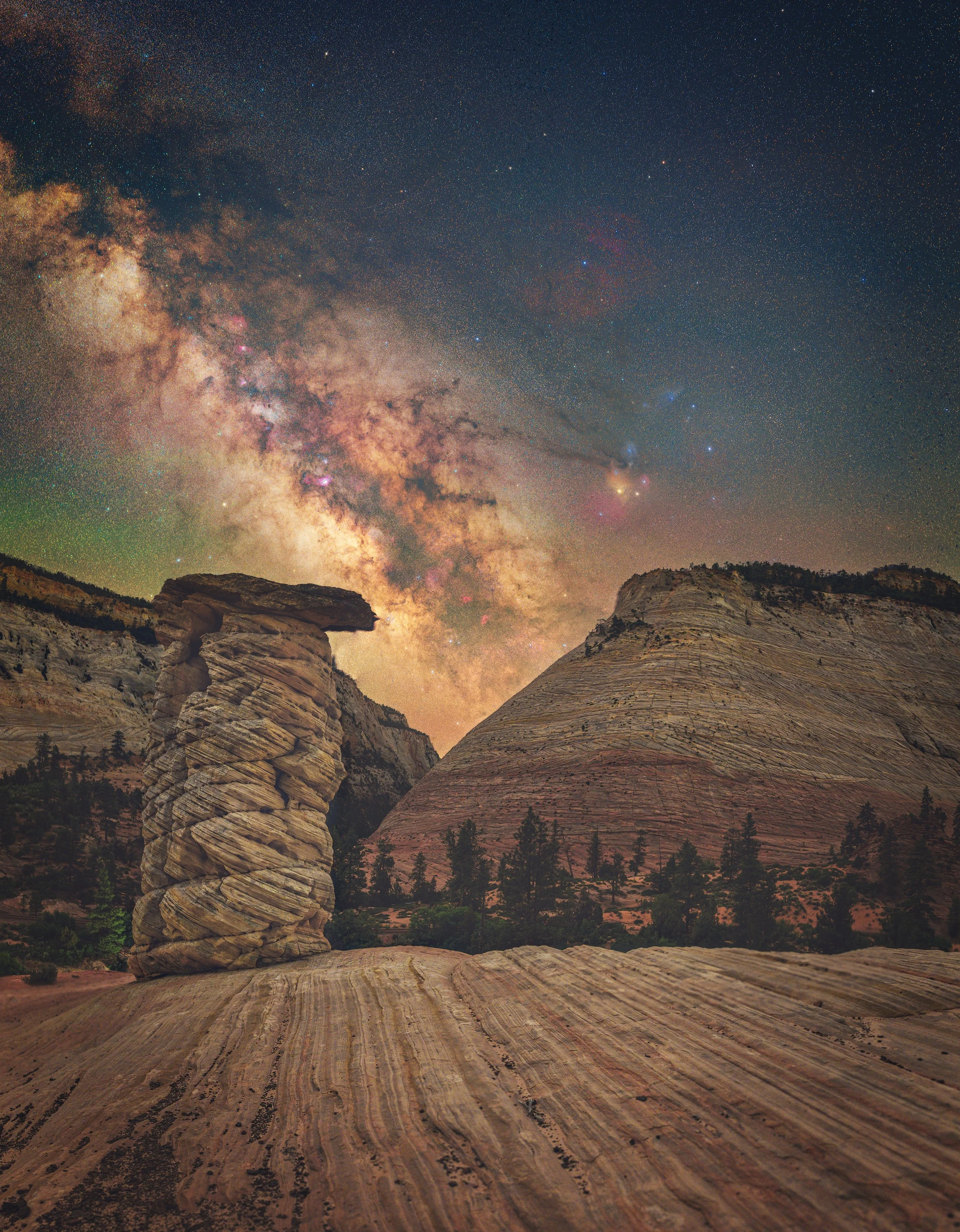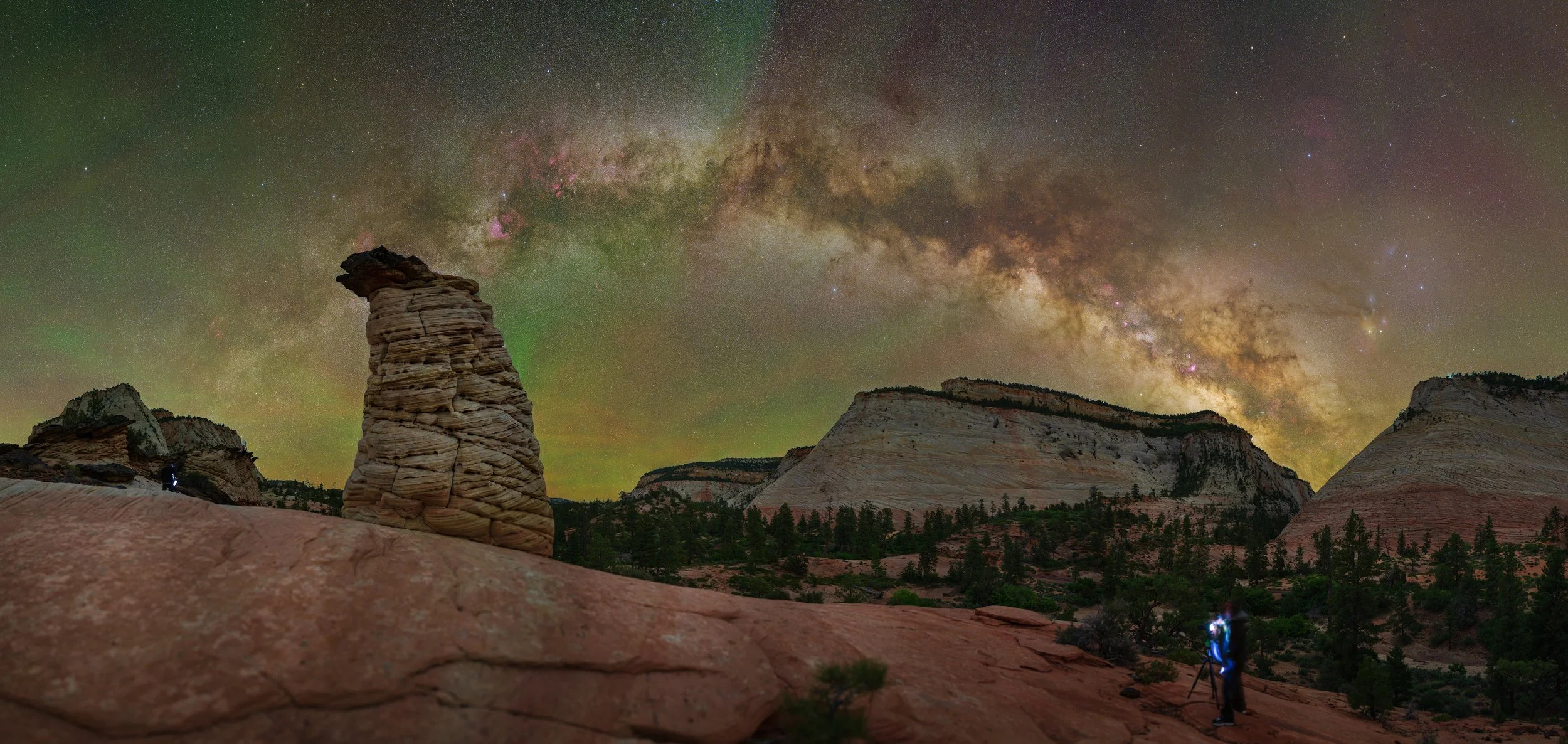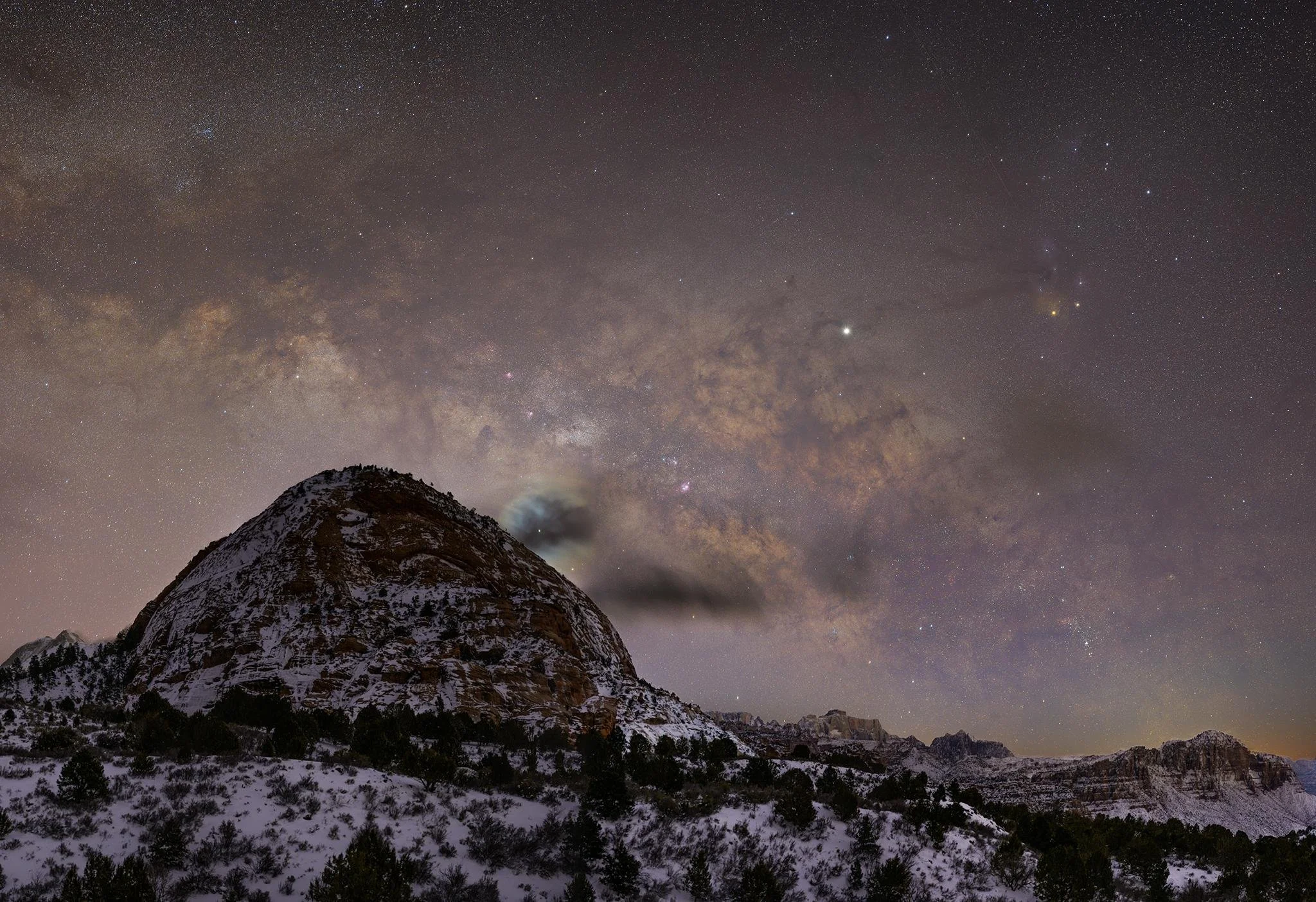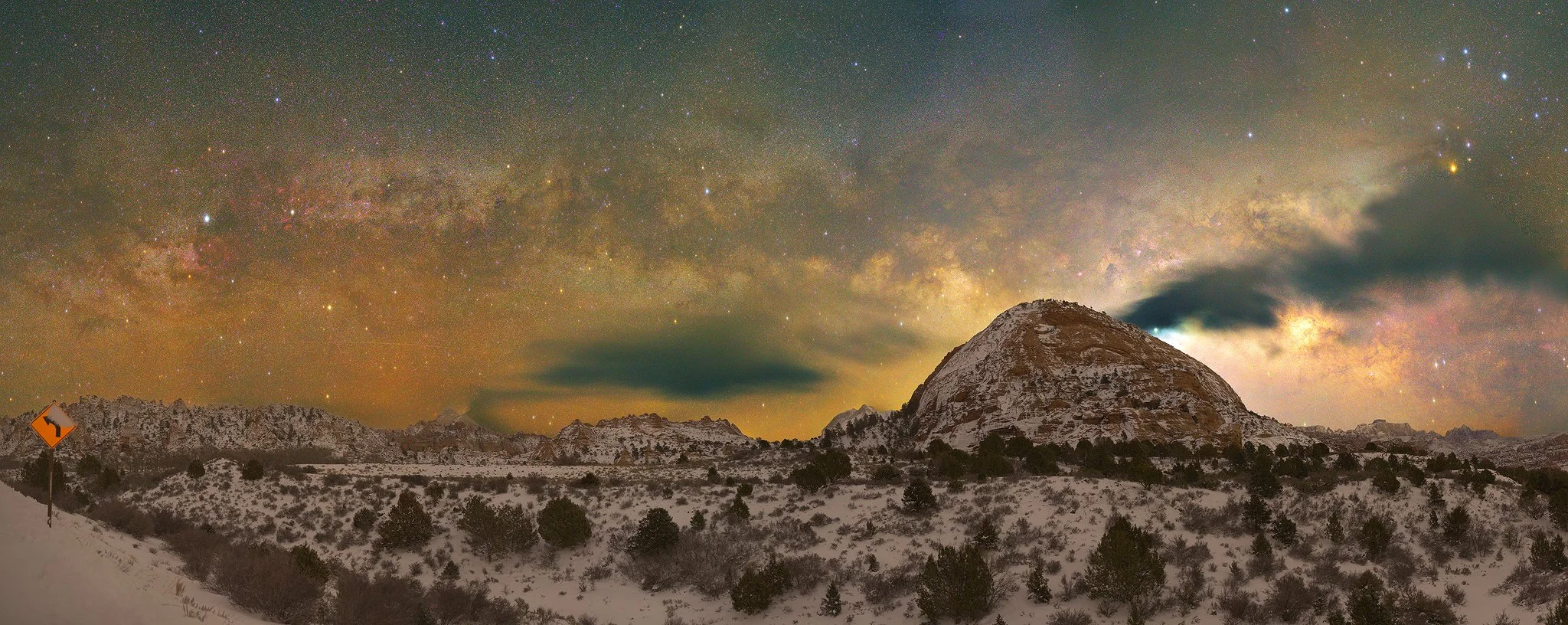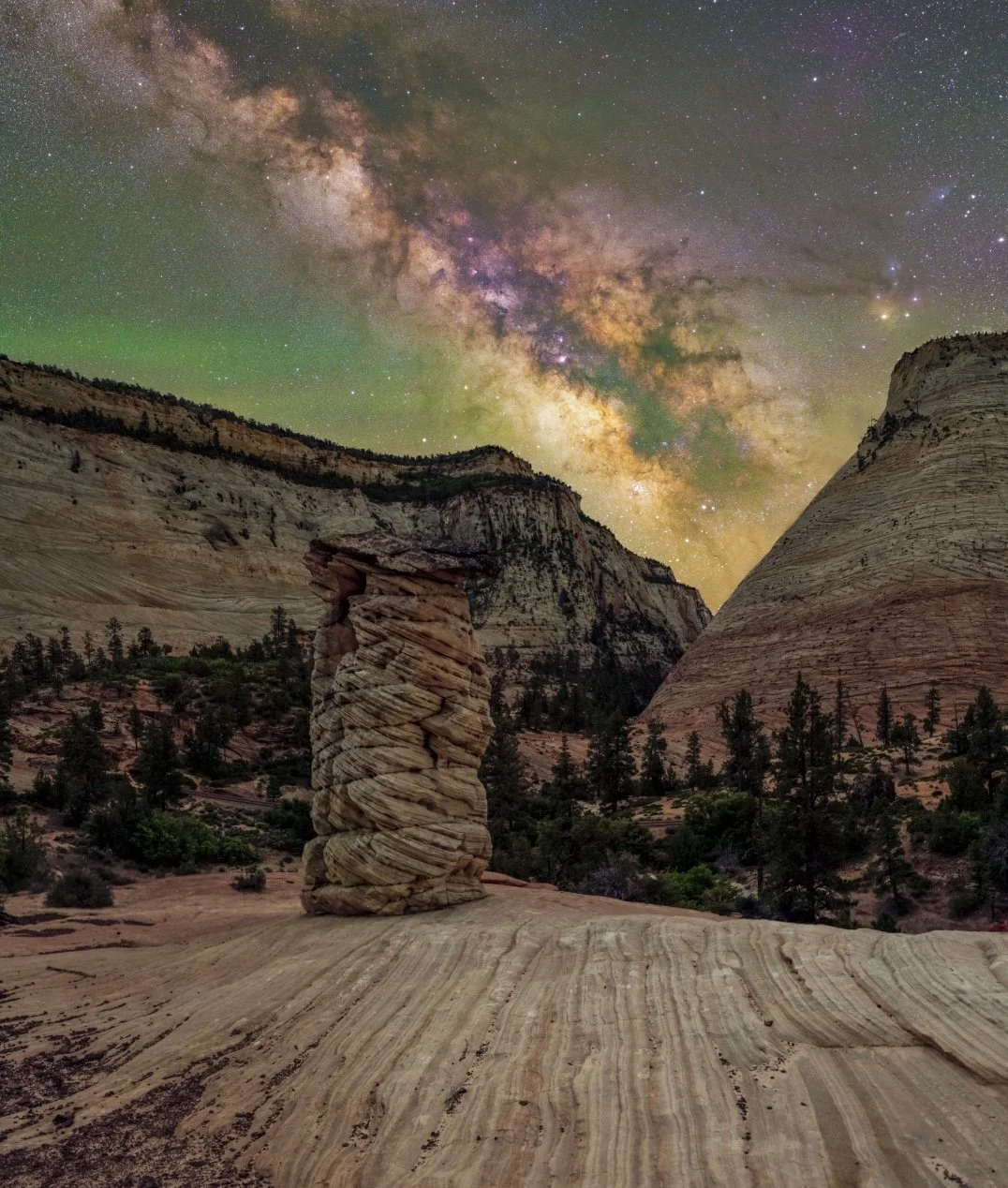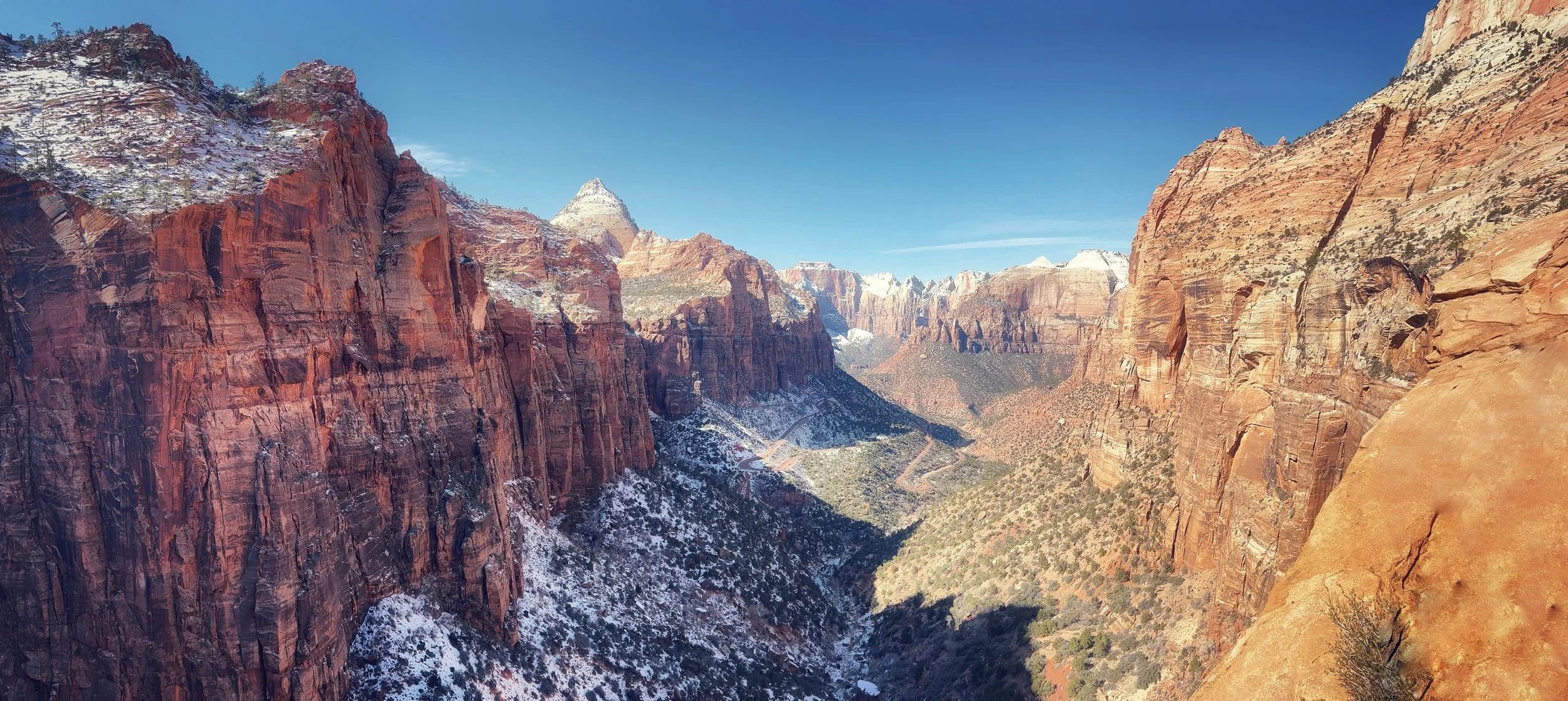
ZION
Zion National Park, located in southwestern Utah, is a geological masterpiece that showcases some of the most striking and diverse landscapes in the American Southwest. The park's geology provides a vivid narrative of sedimentation, uplift, and erosion, unfolding over the span of about 250 million years.
FORMATION AND STRATIGRAPHY
The foundation of Zion's breathtaking scenery lies in its layered sedimentary rock formations, which were deposited over millions of years. These layers were formed from sediments carried by winds, rivers, and seas that once covered the area. The park's geology is primarily composed of nine formations, which, from oldest to youngest, include the Moenkopi Formation, Kayenta Formation, Navajo Sandstone, Temple Cap Formation, and Carmel Formation, among others. The most iconic of these, the Navajo Sandstone, dominates the park's landscape. This massive, cross-bedded sandstone, known for its towering cliffs and deep canyons, was deposited during the Early Jurassic period and is responsible for the park's renowned features, such as the sheer walls of Zion Canyon. This formation was created from vast desert dunes, similar to the Sahara Desert today.
UPLIFT AND EROSION
The entire Colorado Plateau, including Zion National Park, experienced significant uplift starting around 13 million years ago. This uplift exposed the previously deposited layers to the forces of erosion. The Virgin River, along with its tributaries, has been the primary agent of erosion within Zion, carving the deep, narrow canyons and sculpting the park's famous monoliths, spires, and cliffs.
GEOLOGICAL FEATURES
Zion is known for its high plateaus, rock towers, mesas, and the deep canyons that cut through them. The park's most famous feature, Zion Canyon, is a stunning gorge carved by the North Fork of the Virgin River, with walls towering up to 2,000 feet above the canyon floor. Other notable geological features in Zion include the Great White Throne, a massive monolith of white Navajo Sandstone; the Kolob Arch, one of the world's largest natural arches; and the Checkerboard Mesa, known for its unique grid-like pattern of weathering.
Eric: Chequerboard Mesa
Eric: Chequerboard Mesa Panorama
Eric: Kolob Terrace
Eric: Kolob Terrace and those asshole clouds
Bry: Kolob Terrace
Bry: Chequerboard Mesa Panorama
Bry: Chequerboard Mesa
